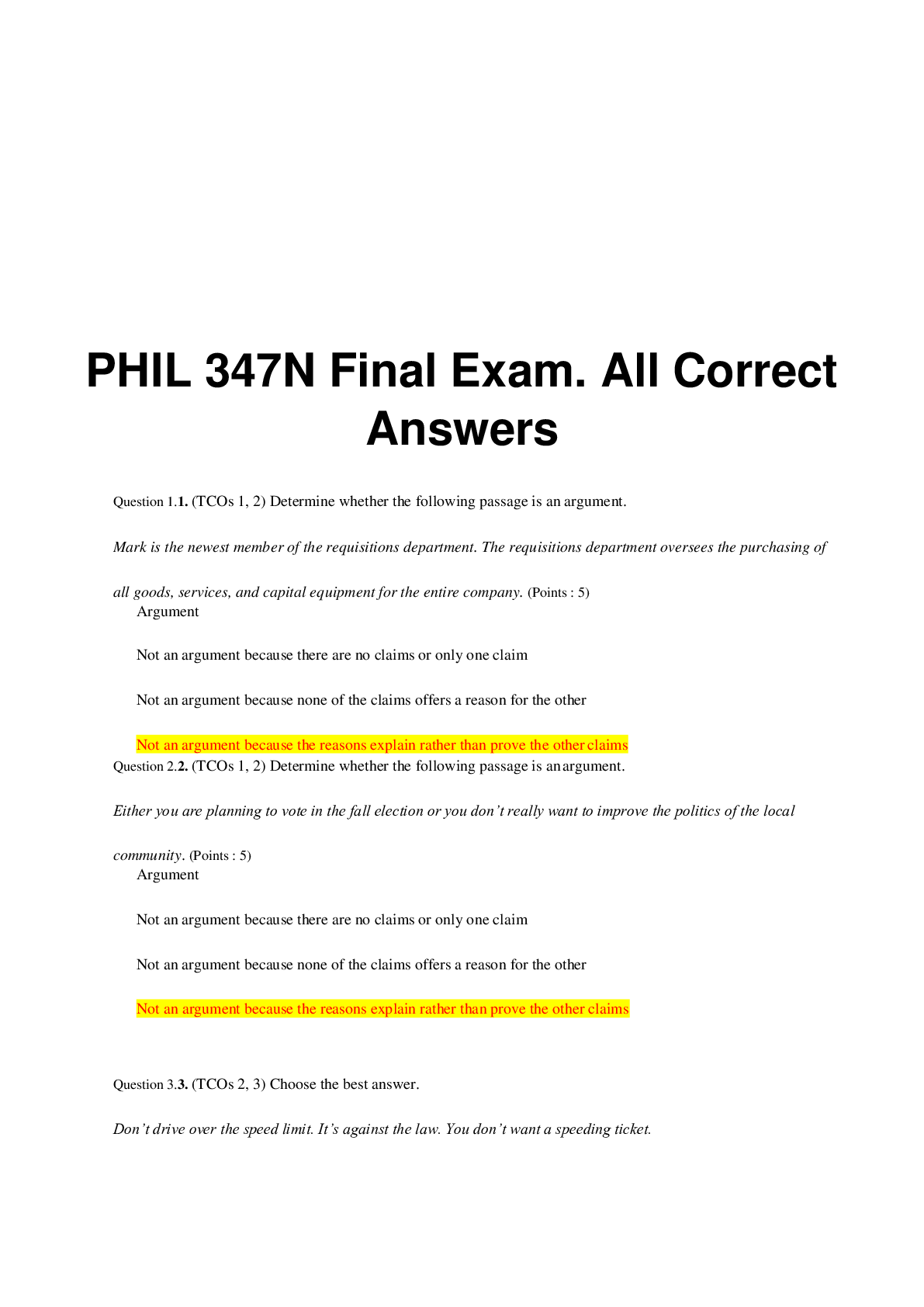*NURSING > QUESTIONS & ANSWERS > ATI_OXYGENATION_PRACTICE_9.KEY (All)
ATI_OXYGENATION_PRACTICE_9.KEY
Document Content and Description Below
1.A nurse is conducting a primary survey of a client who has sustained life-threatening injuries due to a motor-vehicle crash. Identify the sequence of actions the nurse should take. (Move the action... s into the box on the right, placing them in the selected order of performance. Use all the steps.) C. Open the airway using a jaw-thrust maneuver. D. Determine effectiveness of ventilator efforts. B. Establish IV access. A. Perform a Glasgow Coma Scale assessment. E. Remove clothing for a thorough assessment. 2.A nurse is caring for a client who has active pulmonary tuberculosis (TB) and is to be started on intravenous rifampin therapy. The nurse should instruct the client that this medication can cause which of the following adverse effects? A. Constipation Rationale: Rifampin does not cause constipation. More common gastrointestinal effects are diarrhea and nausea. B. Black colored stools Rationale:It is most commonly iron supplements that cause stools to turn black, not rifampin. C. Staining of teeth Rationale: Teeth may be stained from taking liquid iron preparations, not from taking rifampin. D. Body secretions turning a red-orange color Rationale: Rifampin is used in combination with other medicines to treat TB. Rifampin will cause the urine, stool, saliva, sputum, sweat, and tears to turn reddish-orange to reddish-brown. 3.A nurse is caring for a client who has returned from the surgical suite following surgery for a fractured mandible. The client had intermaxillary fixation to repair and stabilize the fracture. Which of the following actions is the priority for the nurse to take? A. Prevent aspiration. Rationale: When using the airway, breathing, circulation approach to client care, the nurse should determine that the priority goal is to prevent the client from aspirating. Because the client's jaws are wired together, aspiration of emesis is a possibility. Therefore, the client should be given medication for nausea, and wire cutters should be kept at the bedside in case of vomiting. B. Ensure adequate nutrition. Rationale: Created on:08/03/2018 Page 1 Detailed Answer Key Complex Oyxgenation ATI Practice The client should be NPO initially after surgery until the gag reflex has returned. Once the client is able to eat, the client may advance to a calorie-appropriate, high-protein liquid diet. However, this is not the priority at this time. C. Promote oral hygiene Rationale: The client will have an incision inside the mouth. While it is important that the client receive frequent mouth cleaning, this is not the priority at this time. D. Relieve the client's pain. Rationale: While the client may be in pain and will need to be medicated, this is not the priority at this time. 4.A nurse caring for a client who has hypertension and asks the nurse about a prescription for propranolol. The nurse should inform the client that this medication is contraindicated in clients who have a history of which of the following conditions? A. Asthma Rationale:Propranolol, a beta-blocker, is contraindicated in clients who have asthma because it can cause bronchospasms. Propranolol blocks the sympathetic stimulation, which prevents smooth muscle relaxation. B. Glaucoma Rationale:Beta-blockers are contraindicated in clients who have cardiogenic shock, but are not contraindicated in a client who has glaucoma. C. Depression Rationale:Beta-blockers are contraindicated in clients who have AV heart block, but are not contraindicated in clients who have depression. D. Migraines Rationale:Beta-blockers are used for prophylactic treatment of migraine headaches. 5.A nurse is caring for a client who has acute respiratory distress syndrome (ARDS), and requires mechanical ventilation. The client receives a prescription for pancuronium. The nurse recognizes that this medication is for which of the following purposes? A. Decrease chest wall compliance Rationale: Neuromuscular blocking agents, such as pancuronium, induce paralysis by relaxing skeletal muscles, which improves chest wall compliance. B. Suppress respiratory effort Rationale: Neuromuscular blocking agents, such as pancuronium, induce paralysis and suppress the client's respiratory efforts to the point of apnea, allowing the mechanical ventilator to take over the work of breathing for the client. This therapy is especially helpful for a client who has ARDS Created on:08/03/2018 Page 2 Detailed Answer Key Complex Oyxgenation ATI Practice and poor lung compliance. C. Induce sedation Rationale: Neuromuscular blocking agents, such as pancuronium, induce paralysis and have no sedative effect at all. A sedative or analgesic should be prescribed as an adjunct to the pancuronium. D. Decrease respiratory secretions Rationale: Neuromuscular blocking agents, such as pancuronium, induce paralysis. An adverse effect of this medication is increased production of respiratory secretions. 6.A nurse is caring for a client who experienced a lacerated spleen and has been on bedrest for several days. The nurse auscultates decreased breath sounds in the lower lobes of both lungs. The nurse should realize that this finding is most likely an indication of which of the following conditions? A. An upper respiratory infection Rationale:Although the spleen plays a role in immunity against bacterial infections, the nurse would be more concerned about the risk of an upper respiratory infection in a client who has undergone splenectomy, or removal of the spleen. B. Pulmonary edema Rationale:Pulmonary edema may develop in a client who is on bedrest following trauma, but this is not the most likely cause of decreased breath sounds in this client. C. Atelectasis Rationale:Atelectasis is the collapse of part or all of a lung by blockage of the air passages (bronchus or bronchioles) or by hypoventilation. Prolonged bedrest with few changes in position, ineffective coughing, and underlying lung disease are risk factors for the development of atelectasis. D. Delayed gastric emptying Rationale:Although delayed gastric emptying may result in ineffective coughing, this is not the most likely cause of decreased breath sounds in this client. 7.A nurse is observing the closed chest drainage system of a client who is 24 hr post thoracotomy. The nurse notes slow, steady bubbling in the suction control chamber. Which of the following actions should the nurse take? A. Check the tubing connections for leaks. Rationale: This action is used to determine why a water seal chamber has continuous bubbling, not slow, steady bubbling. B. Check the suction control outlet on the wall. Rationale: This action is used to determine why a suction control chamber that is hooked to wall suction has little or no bubbling. Created on:08/03/2018 Page 3 Detailed Answer Key Complex Oyxgenation ATI Practice C. Clamp the chest tube. Rationale: The nurse should briefly clamp the chest tube to check for air leaks or to change the drainage system. This is not an appropriate action for the nurse to take at this time. D. Continue to monitor the client's respiratory status. Rationale:Slow, steady bubbling in the suction control chamber is an expected finding. Therefore, the nurse should continue to monitor the client's respiratory status. 8.A nurse is reviewing the laboratory findings for a client who developed fat embolism syndrome (FES) following a fracture. Which of the following laboratory findings should the nurse expect? A. Decreased serum calcium level Rationale:A decreased serum calcium level is an expected finding for FES, although the reason for this finding is unknown. B. Decreased level of serum lipids Rationale:An increase serum lipid level is an expected finding for FES, although the reason for this finding is unknown. C. Decreased erythrocyte sedimentation rate (ESR) Rationale:An increased ESR is an expected finding for FES, although the reason for this finding is unknown. D. Increased platelet count Rationale:A decreased platelet count is an expected finding for FES, although the reason for this finding is unknown. 9.A nurse is caring for a client who is unconscious and has a breathing pattern characterized by alternating periods of hyperventilation and apnea. The nurse should document that the client has which of the following respiratory alterations? A. Kussmaul respirations Rationale:Kussmaul respirations are deep, rapid, regular respirations and are commonly seen in clients who are experiencing metabolic acidosis. B. Apneustic respirations Rationale:Apneustic respirations are characterized by a prolonged inspiratory phase alternating with expiratory pauses. C. Cheyne-Stokes respirations Rationale: Cheyne-Stokes respirations (CSR) are characterized by a rhythmic increase (to the point of hyperventilation) and decrease (to the point of apnea) in the rate and depth of respiration. CSR Created on:08/03/2018 Page 4 Detailed Answer Key Complex Oyxgenation ATI Practice are common respiratory alterations seen in clients who are unconscious, comatose, or moribund (approaching death). D. Stridor Rationale:Stridor is a continuous, high-pitched sound heard on inspiration in clients who have partial airway obstruction of the larynx or trachea. 10.A nurse is teaching a client who is obese and has obstructive sleep apnea how to decrease the number of nightly apneic episodes. Which of the following client statements indicates an understanding of the teaching? A. "It might help if I tried sleeping only on my back." Rationale: The flat, supine position increases the chance of obstructing the airway. B. "I'll sleep better if I take a sleeping pill at night." Rationale: Hypnotics (sleeping pills) aggravate sleep apnea and can also cause increased daytime somnolence (sleepiness). C. "I'll get a humidifier to run at my bedside at night." Rationale:Bedside humidifiers are an effective way to help clients who have thick pulmonary secretions, but they do not help sleep apnea. D. "If I could lose about 50 pounds, I might stop having so many apneic episodes." Rationale:Sleep apnea is a disorder in which breathing stops during sleep for at least 10 seconds at least five times per hour. Excessive weight is one of the three major risk factors associated with sleep apnea and is the only one the client can modify (gender and age are the other two). Weight loss and maintenance are the primary interventions for the treatment of sleep apnea [Show More]
Last updated: 2 years ago
Preview 1 out of 32 pages

Buy this document to get the full access instantly
Instant Download Access after purchase
Buy NowInstant download
We Accept:

Reviews( 0 )
$7.50
Can't find what you want? Try our AI powered Search
Document information
Connected school, study & course
About the document
Uploaded On
Apr 21, 2022
Number of pages
32
Written in
Additional information
This document has been written for:
Uploaded
Apr 21, 2022
Downloads
0
Views
201


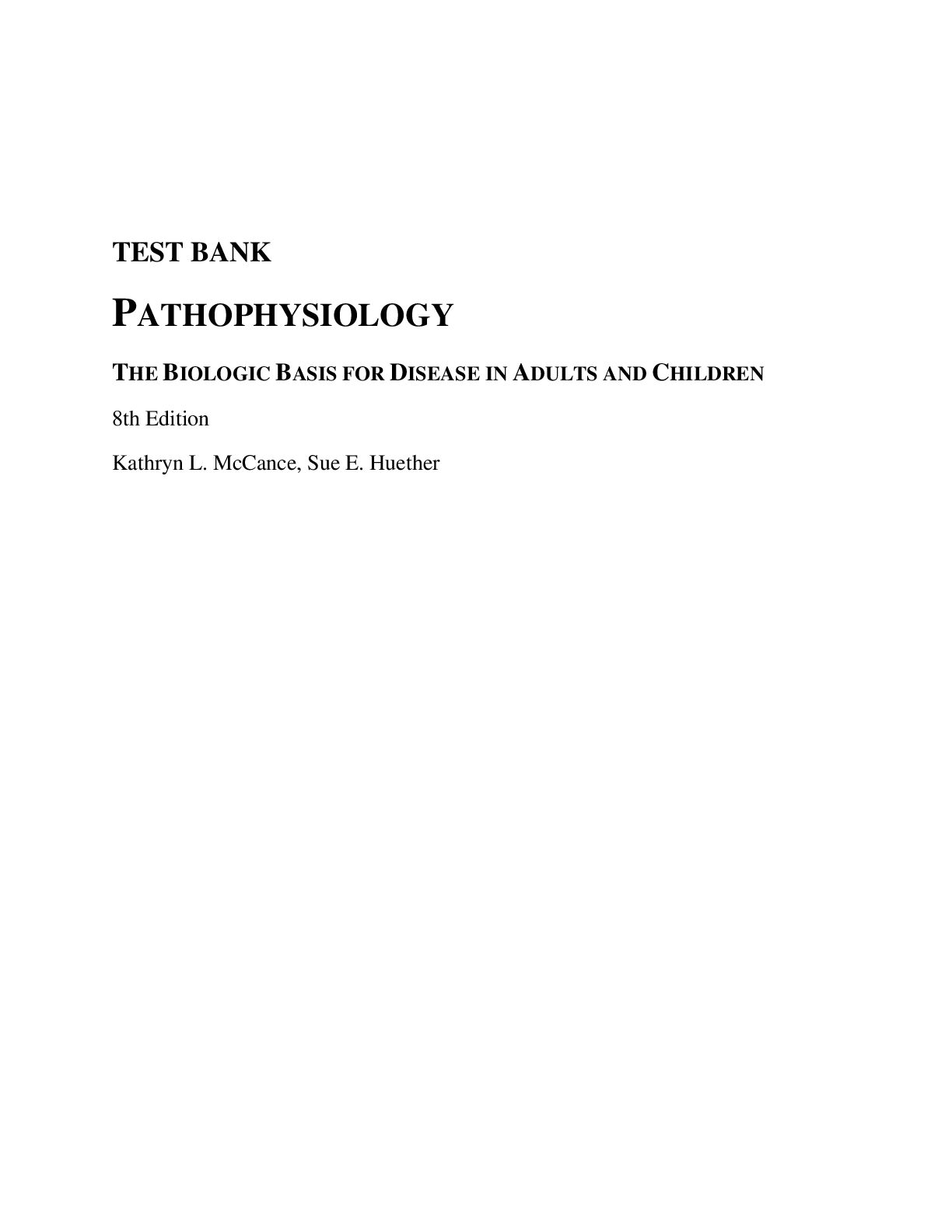


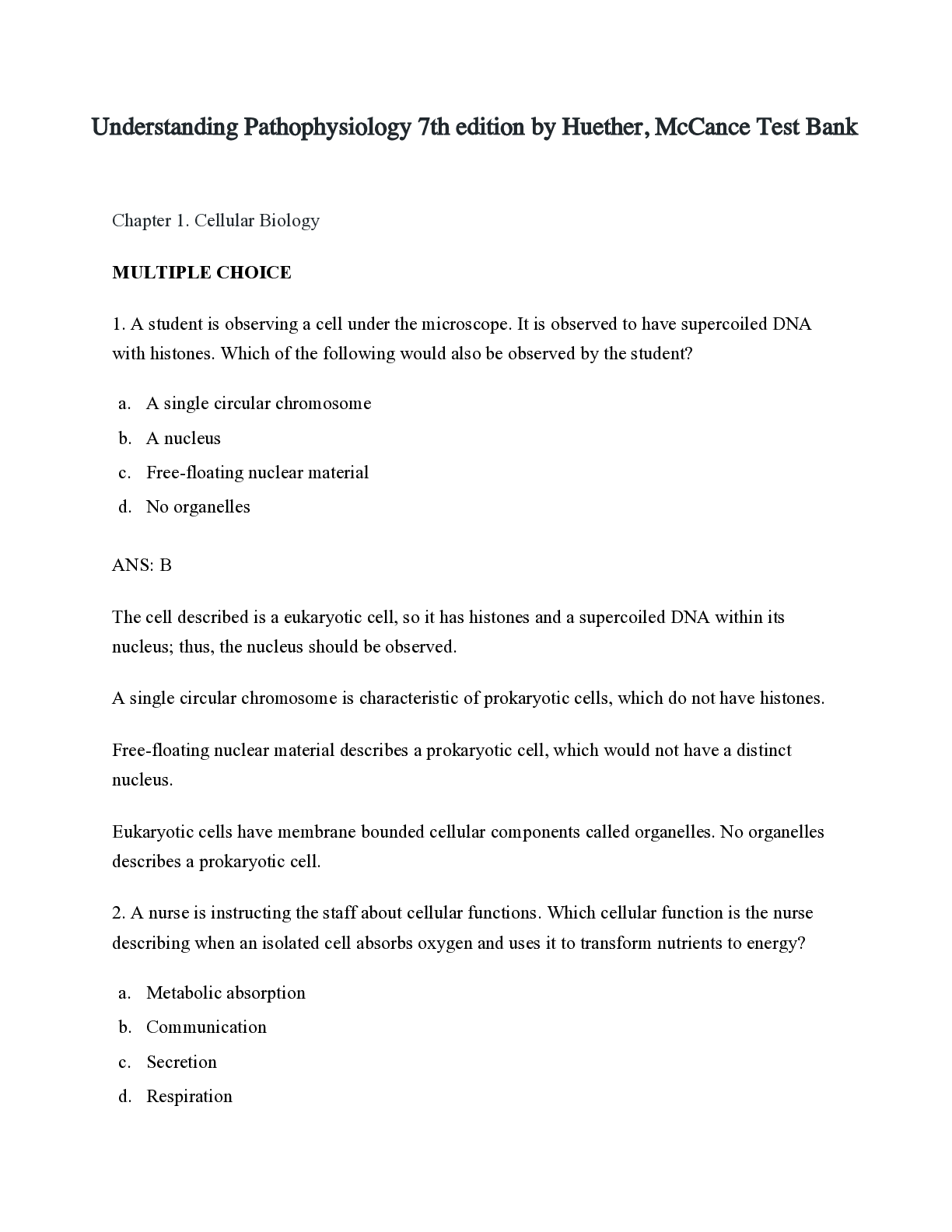
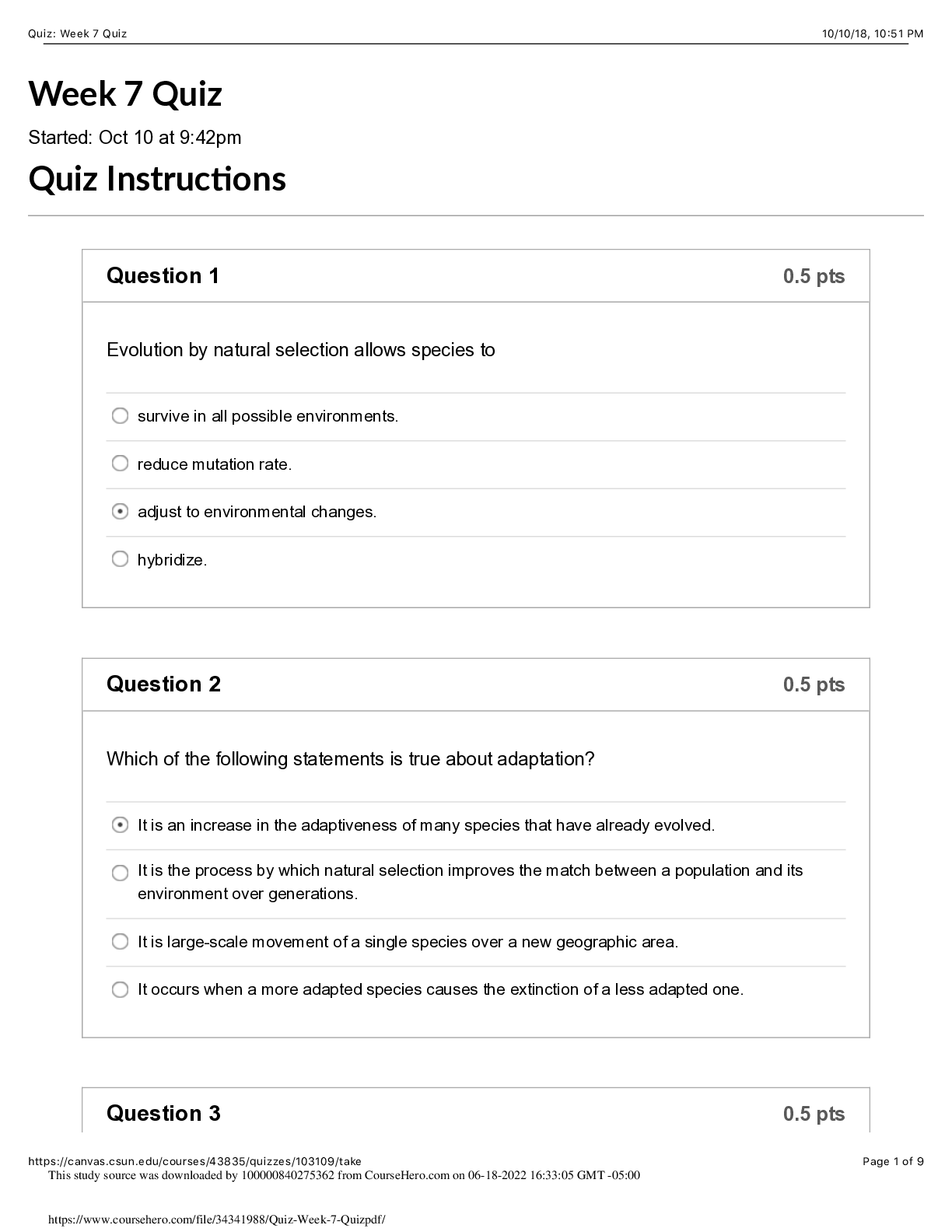
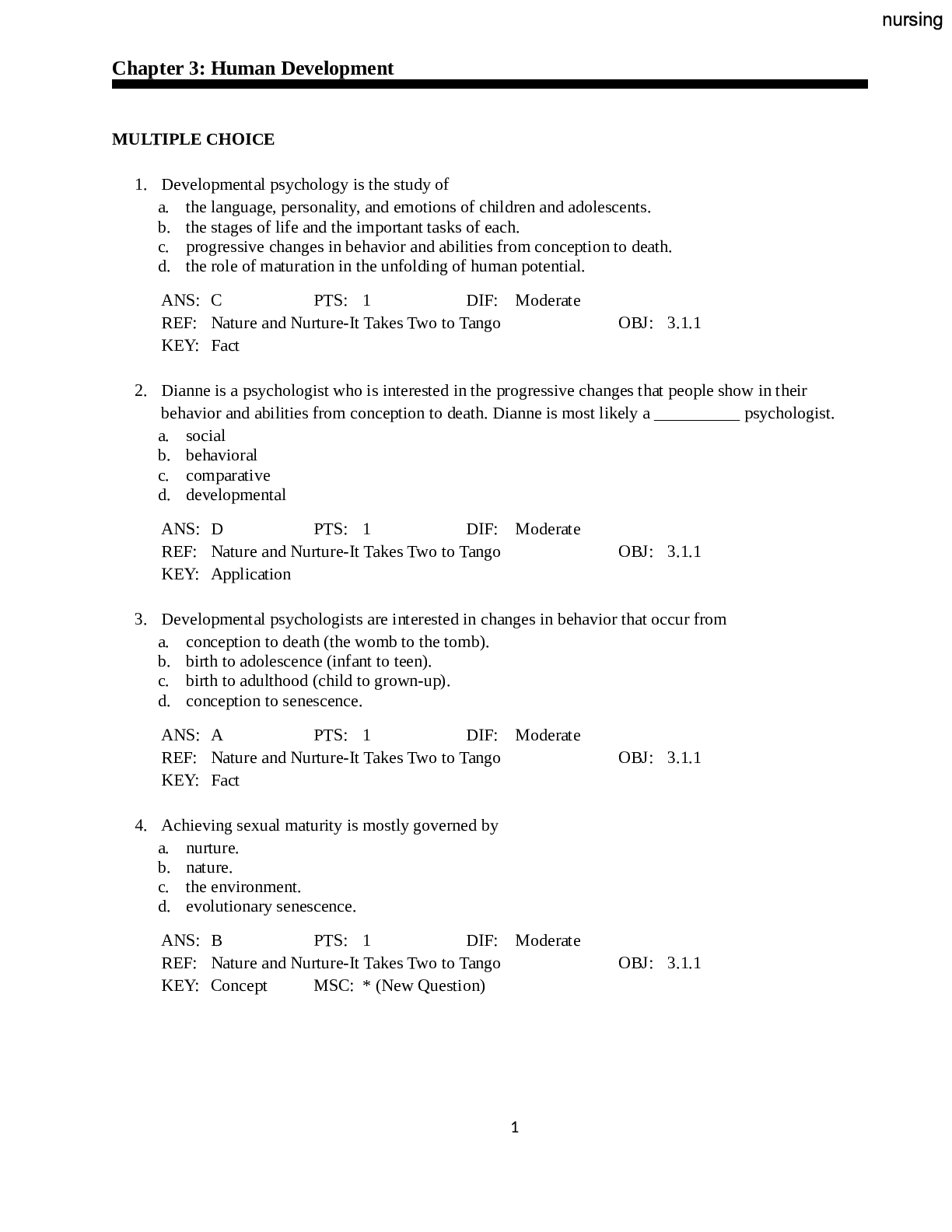

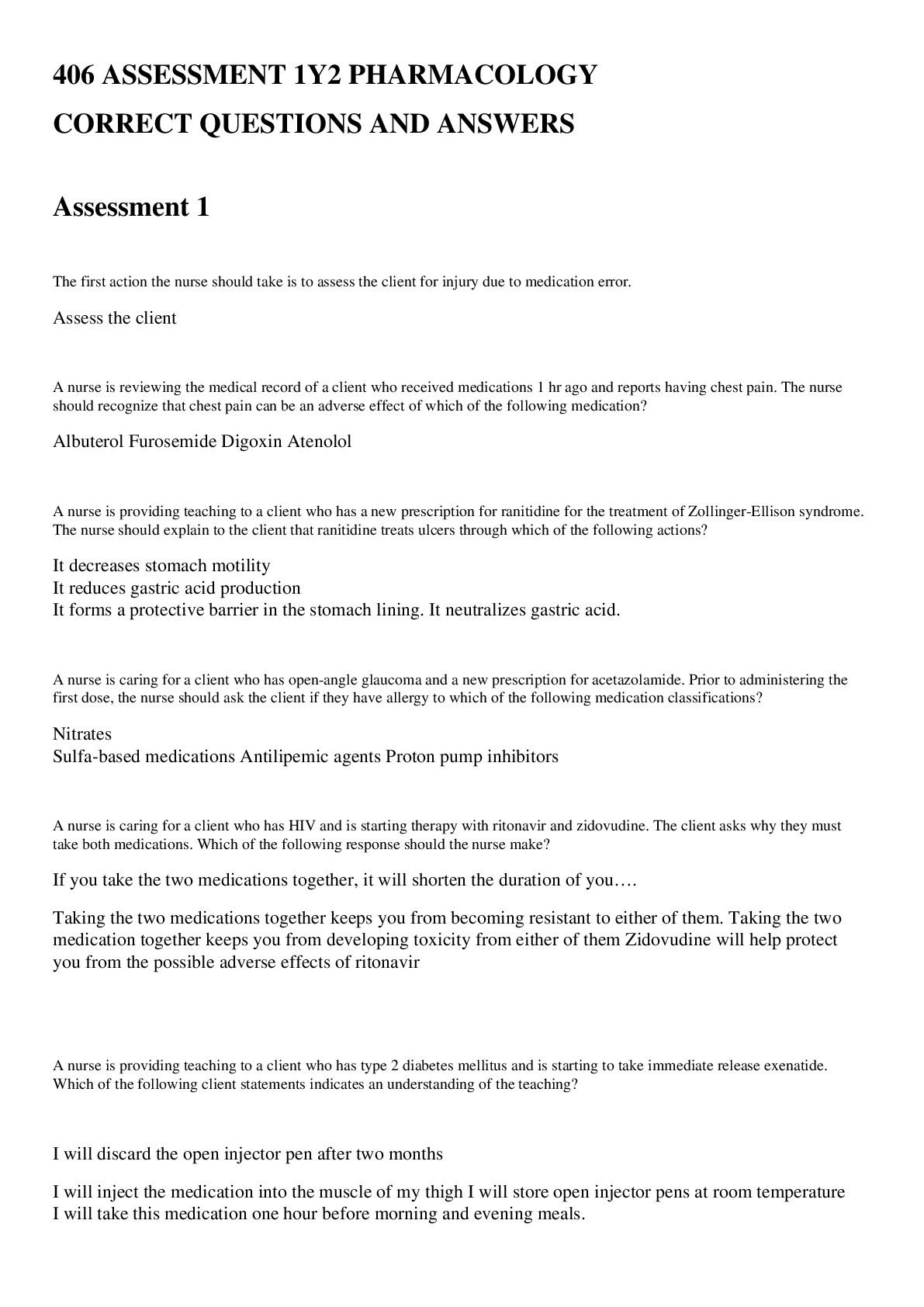
.png)








